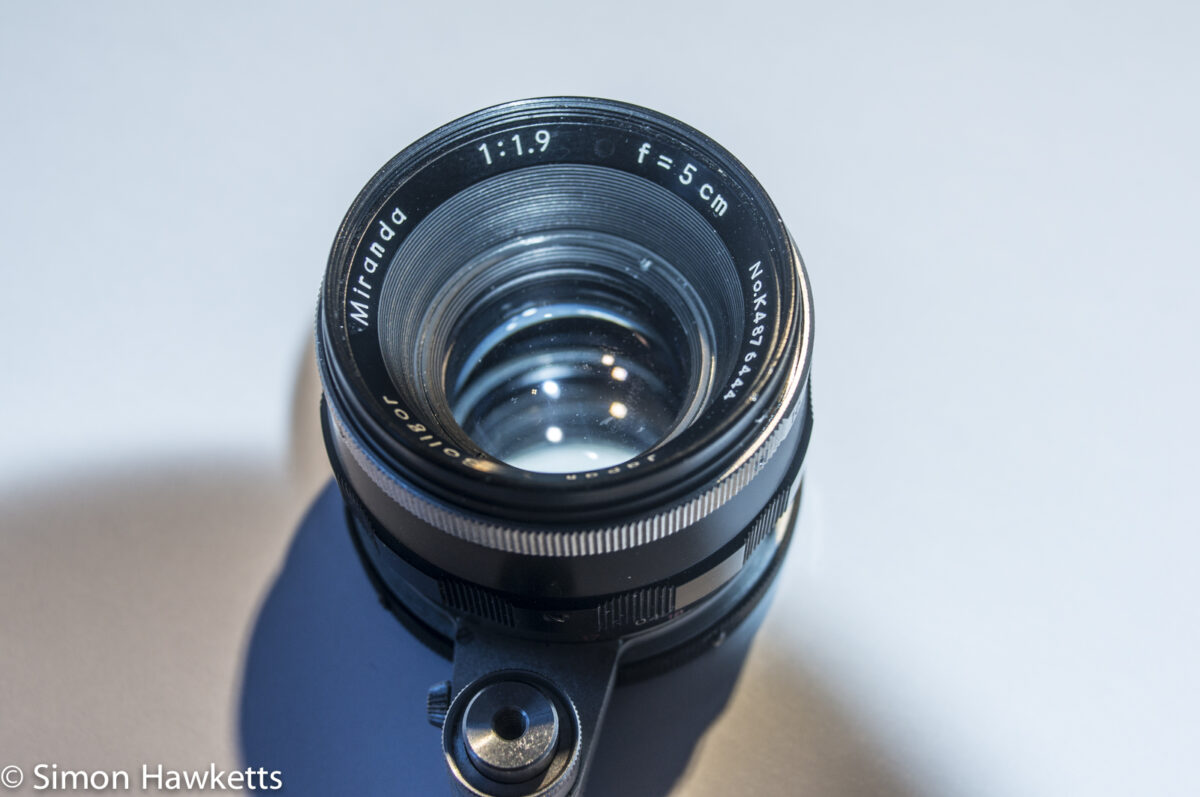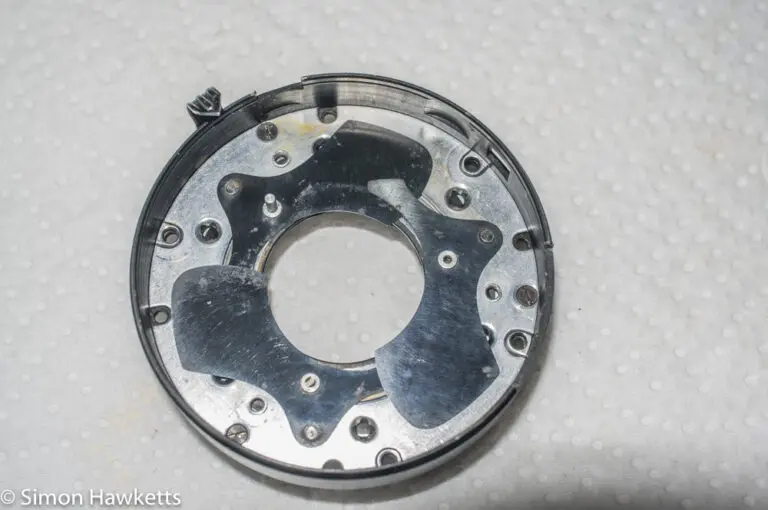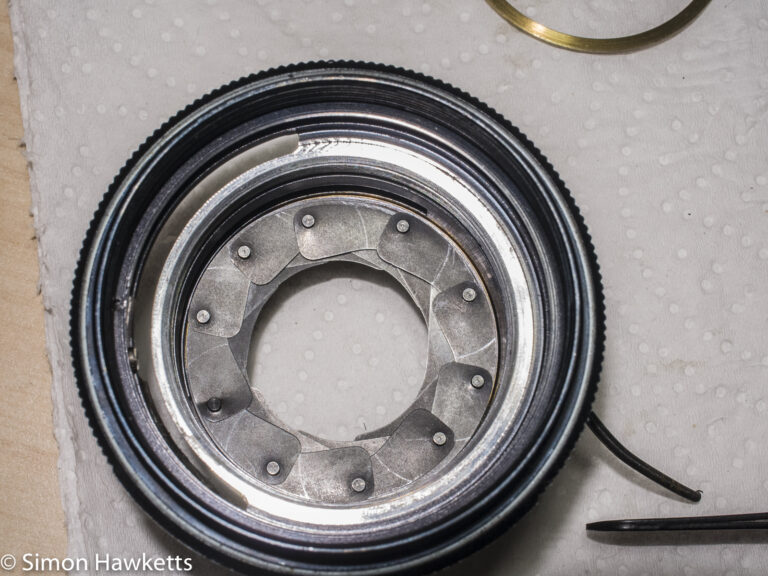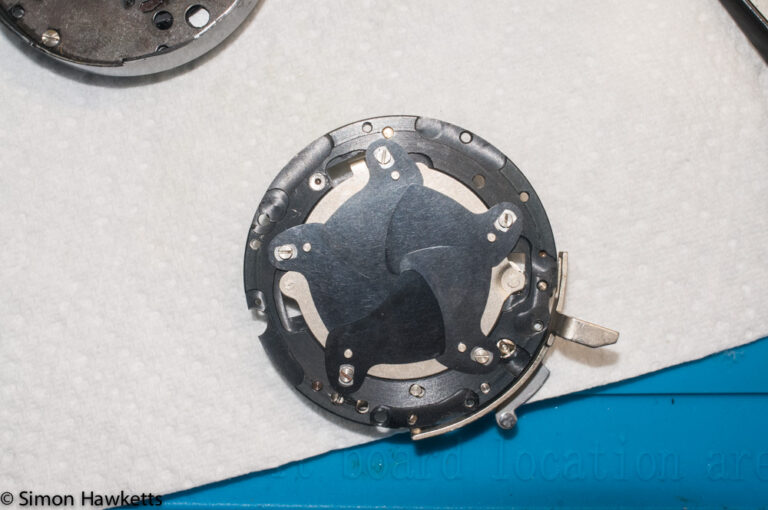Miranda 50mm PAD lens strip down
I posted last week about the Miranda D-r 35 mm SLR I bought from eBay and the condition of the Miranda 50mm PAD lens which was fitted to it. In short the aperture was completely frozen when I received the camera, but started moving after it had warmed up a bit in the house.
However, looking at the aperture through the front of the lens it was obviously covered in a film of oil and after a few days the blades were moving non-uniformly, and I could see that one of the blades was buckling as the aperture was moved, so I decided I would need to strip it down and try to clean up the blades.
Miranda 50mm PAD lens strip down photos
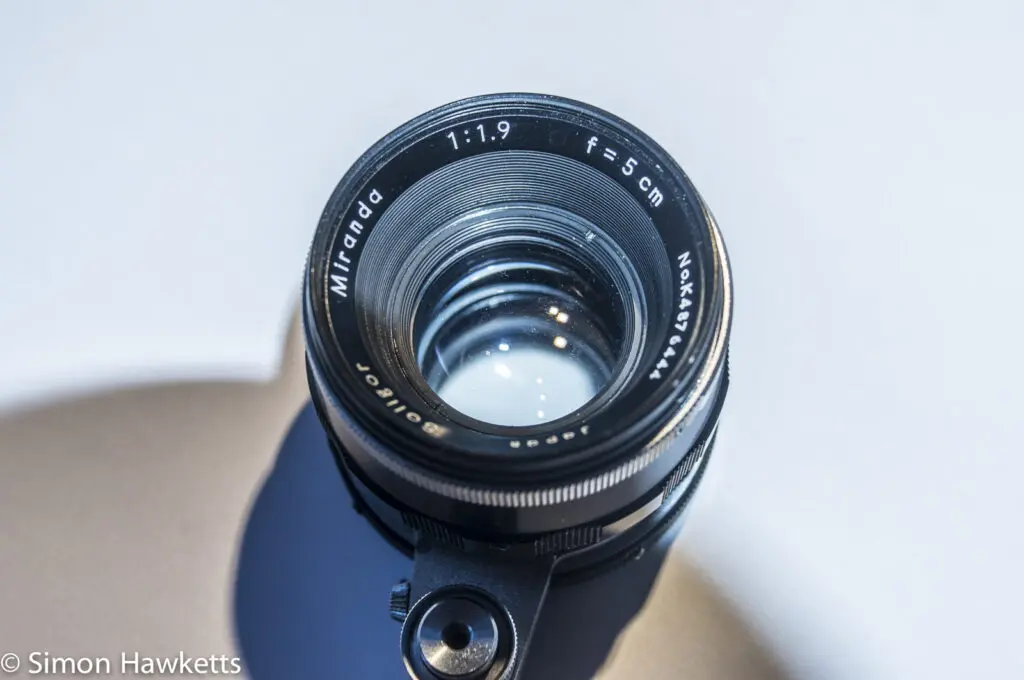
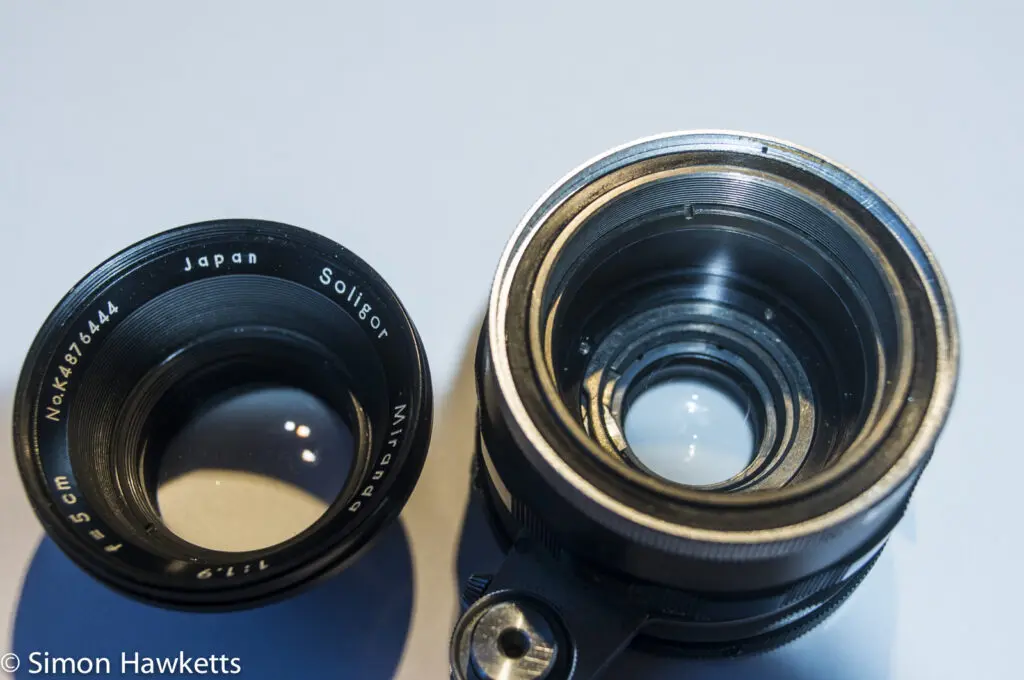
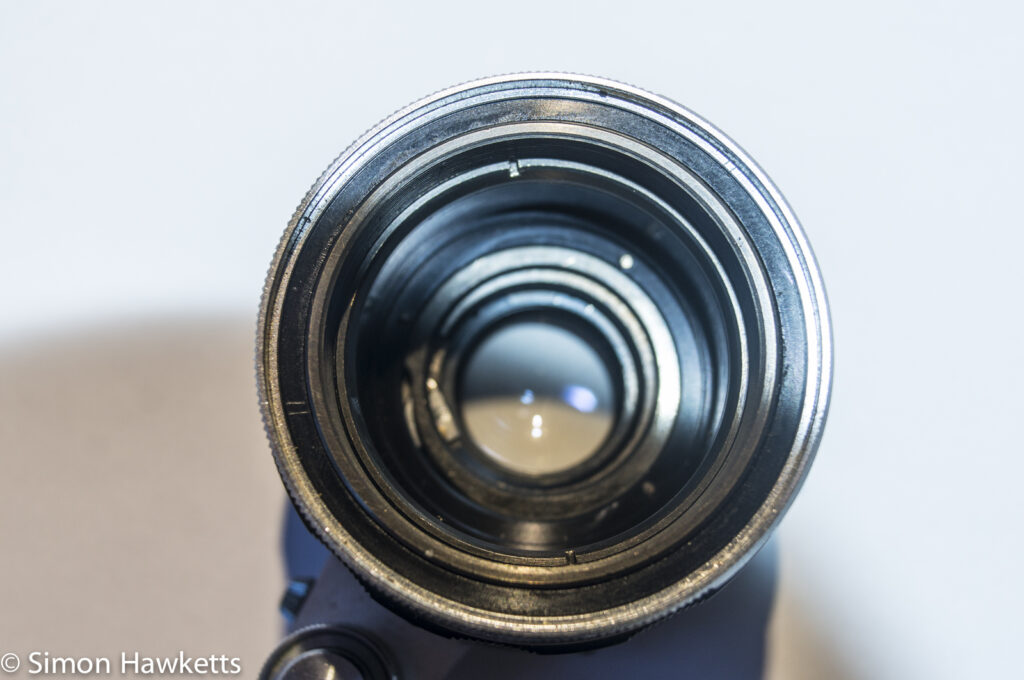
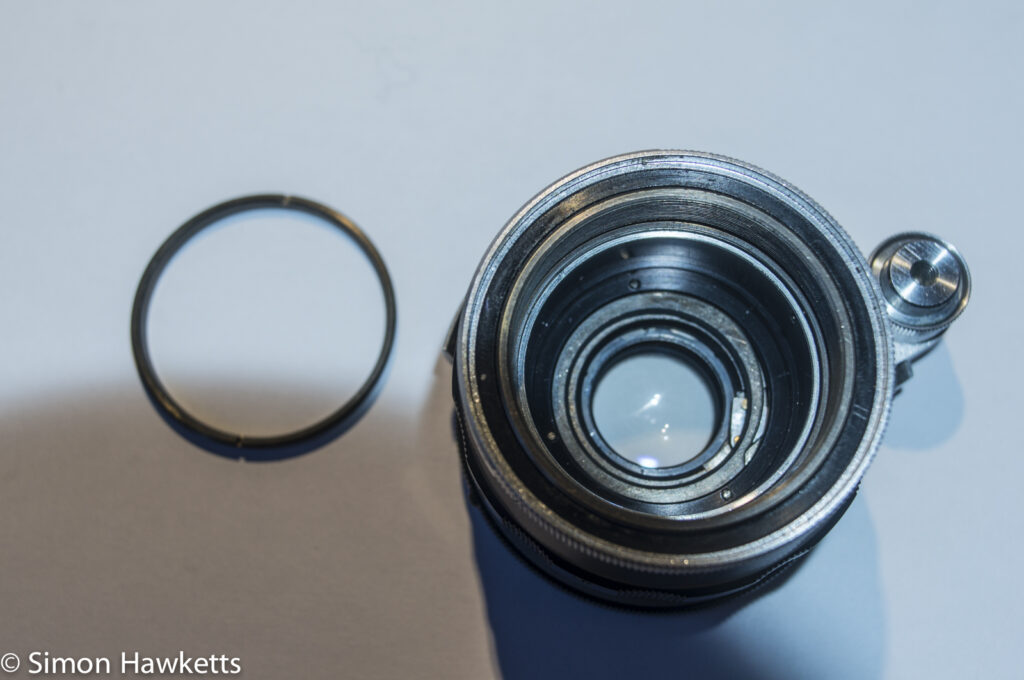
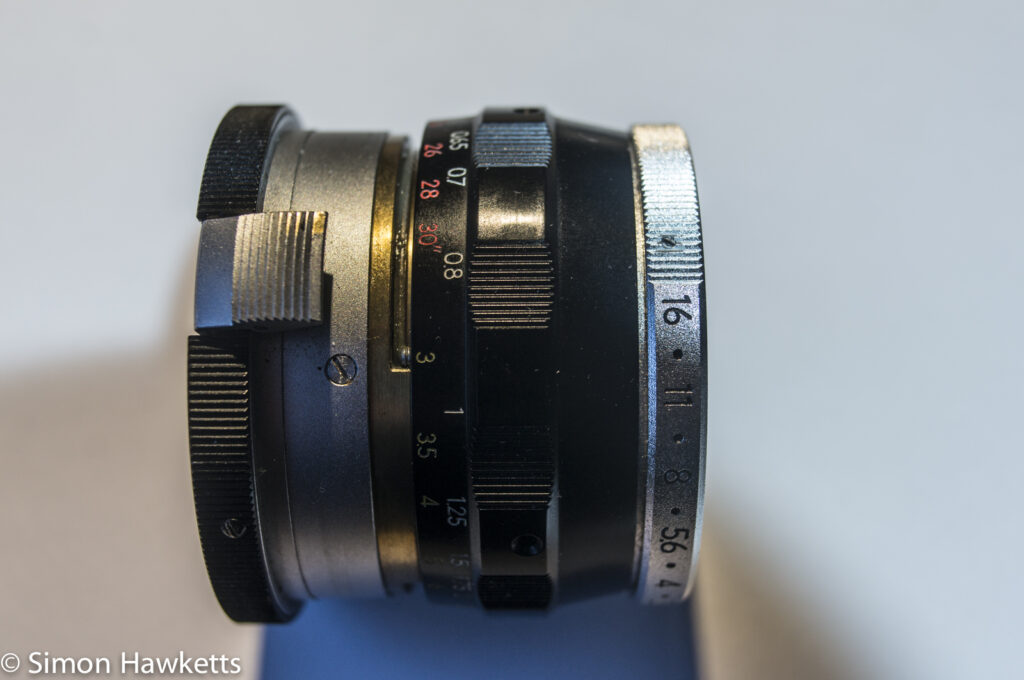
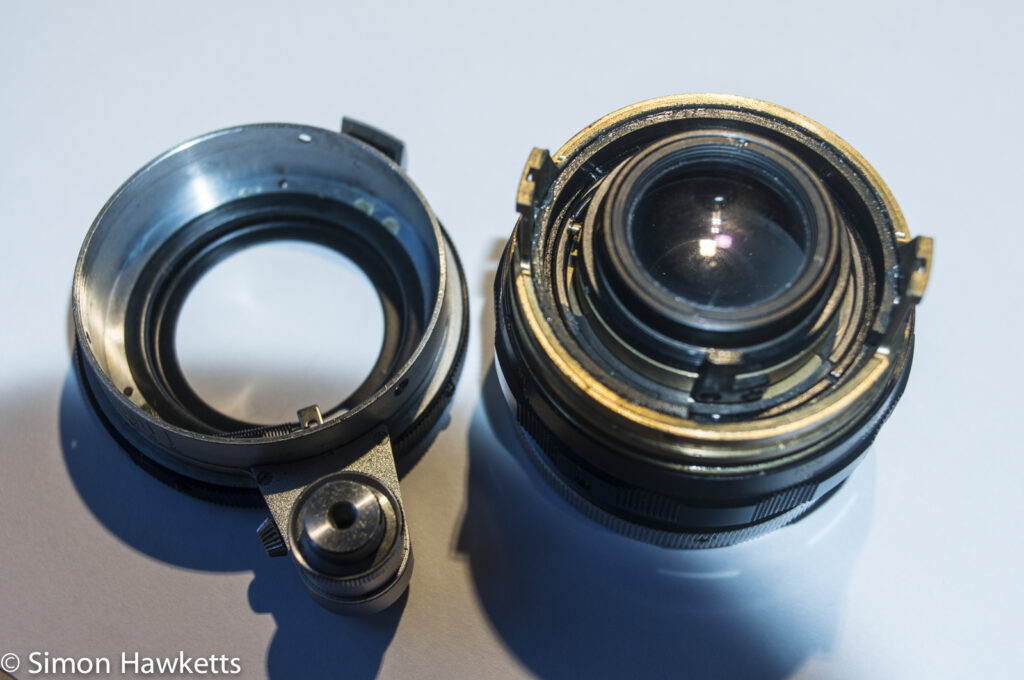
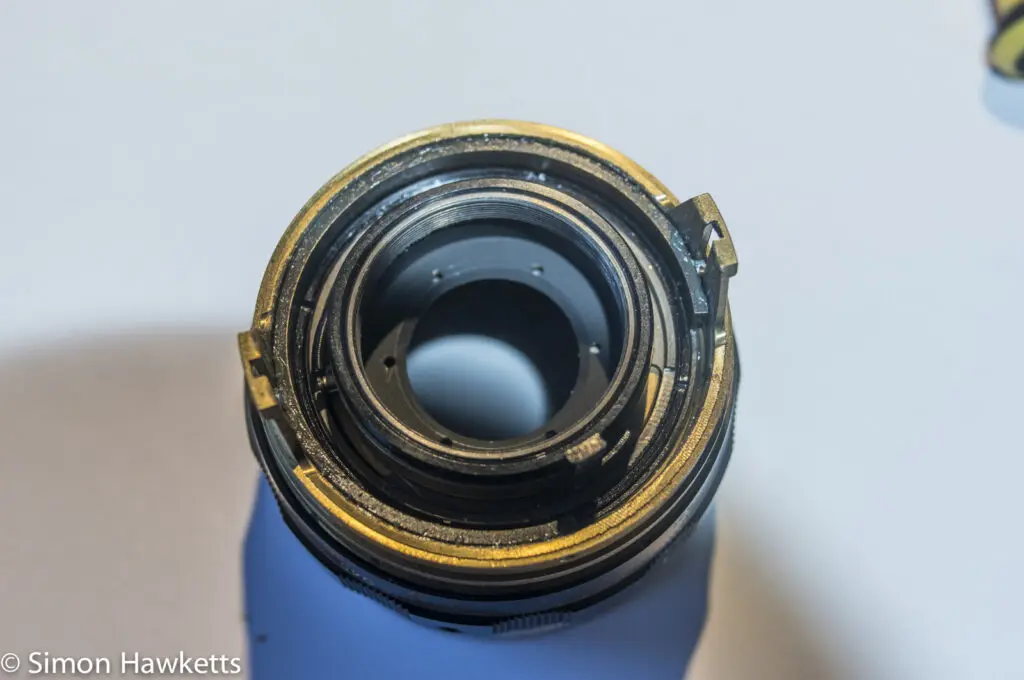
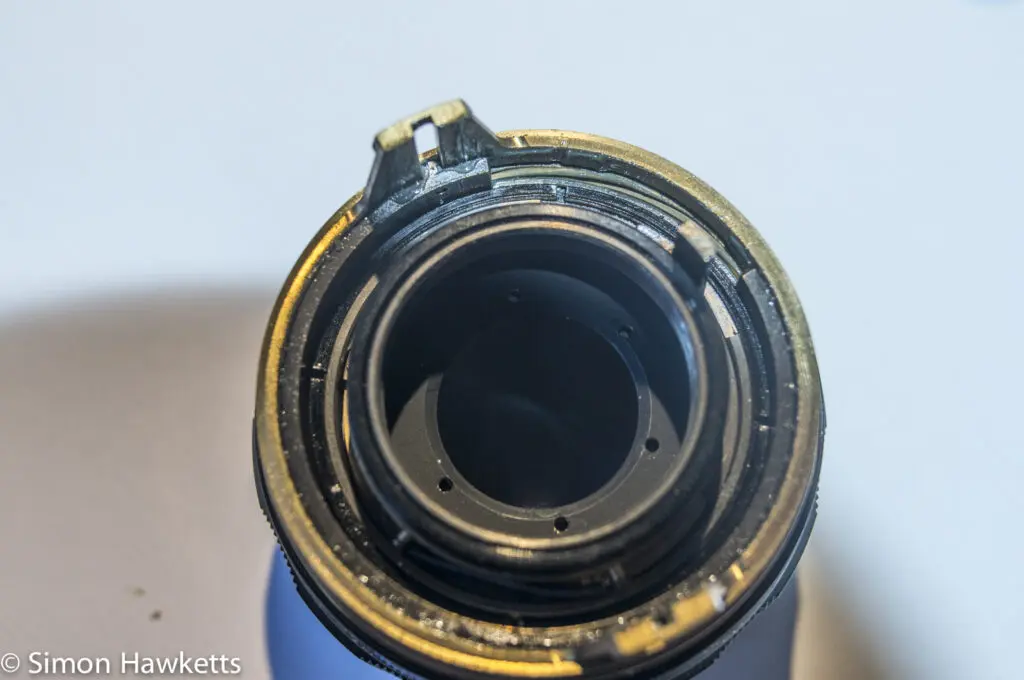
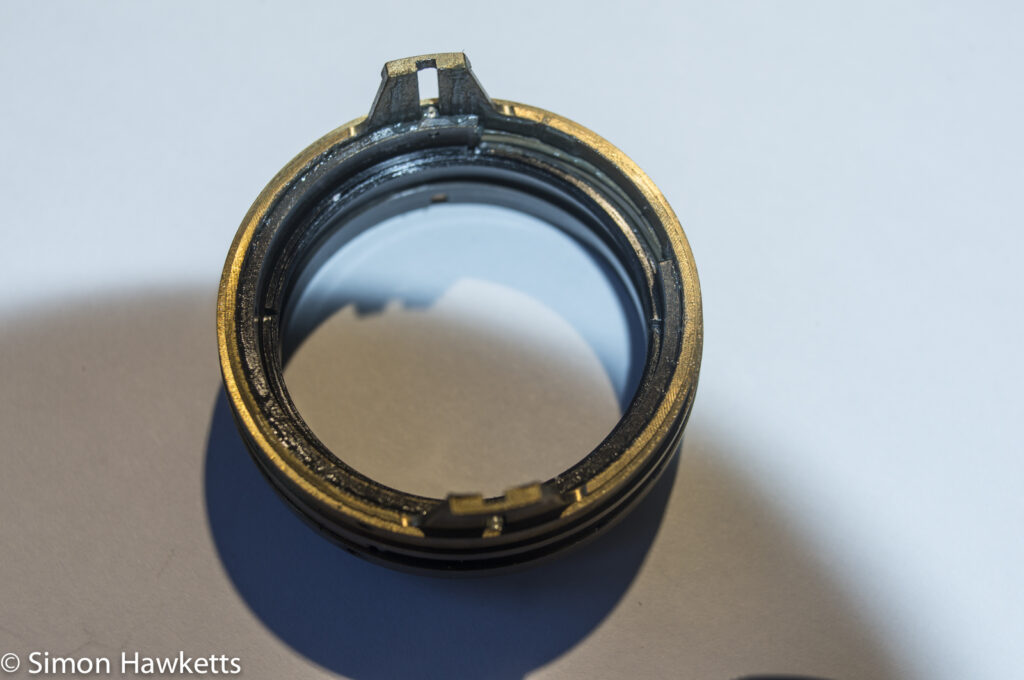
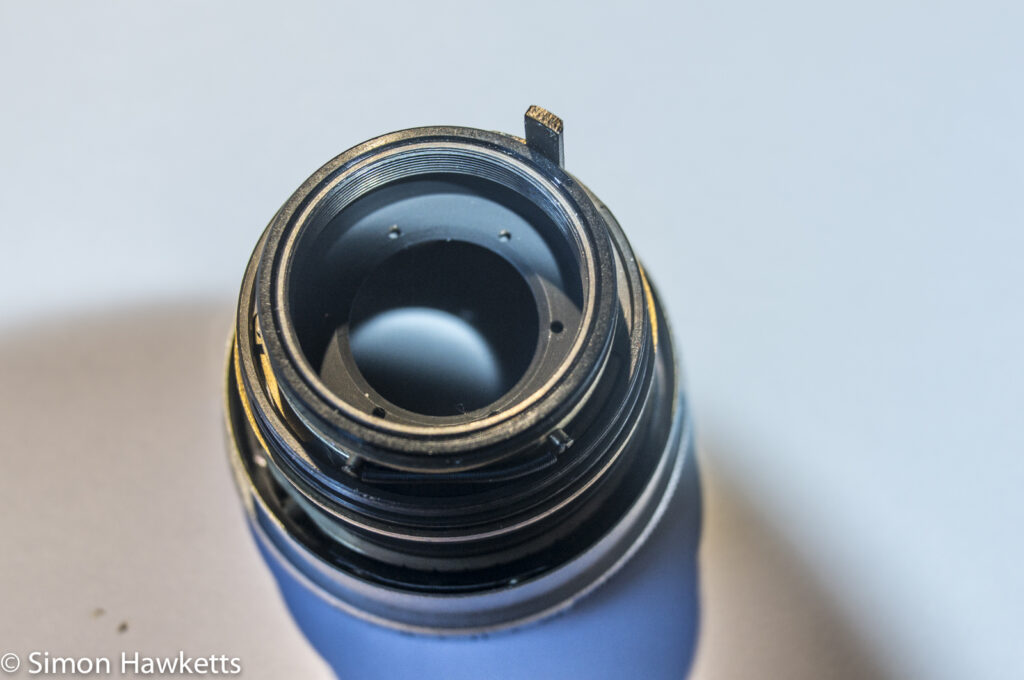
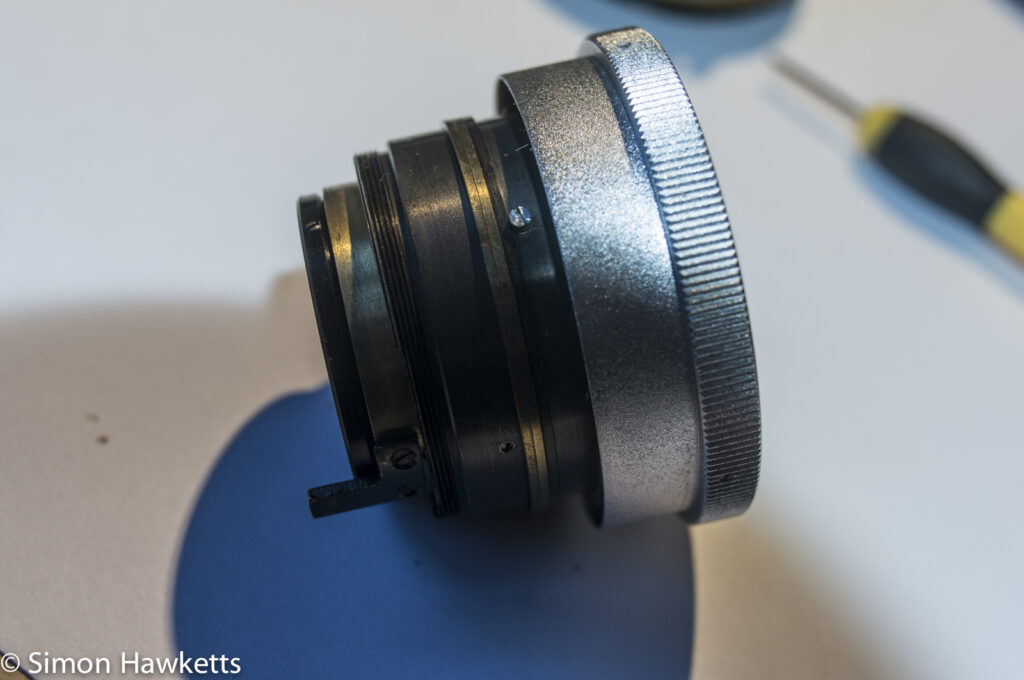
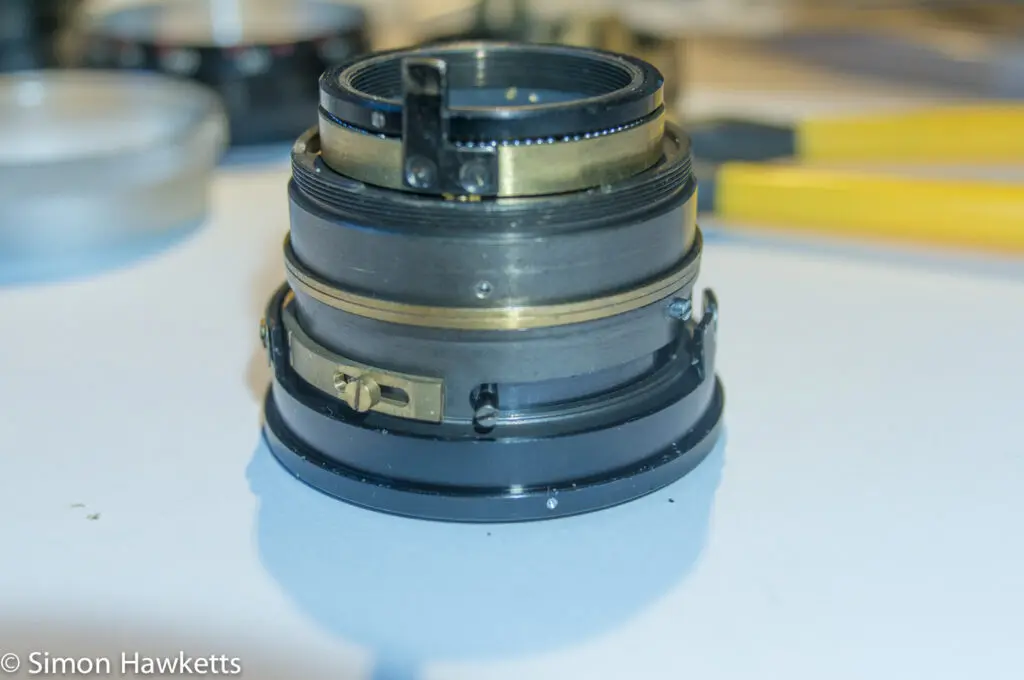
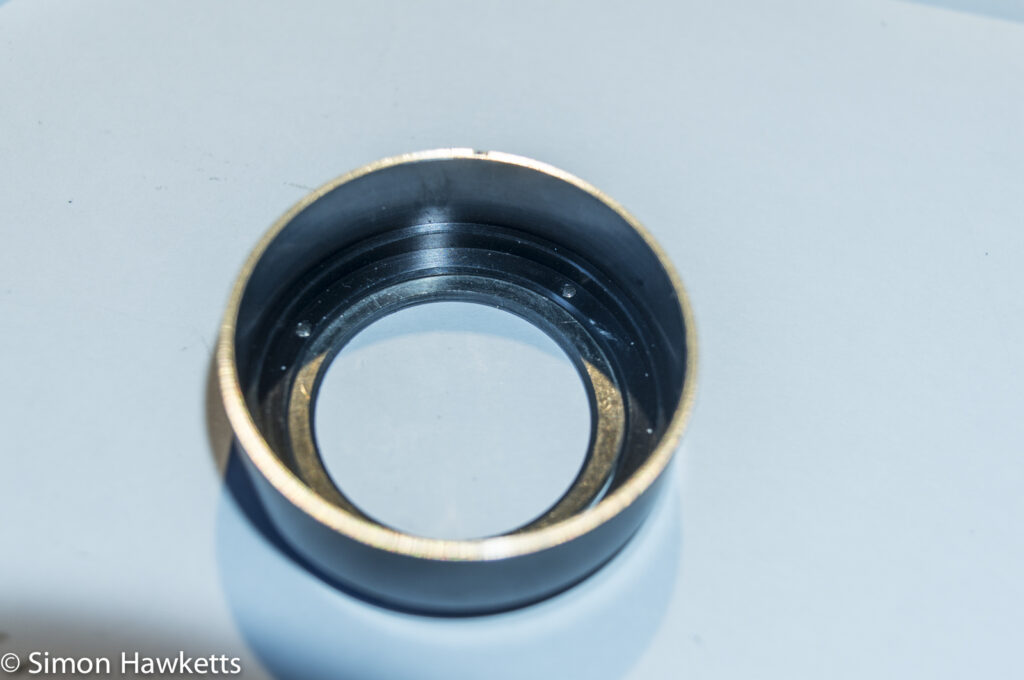
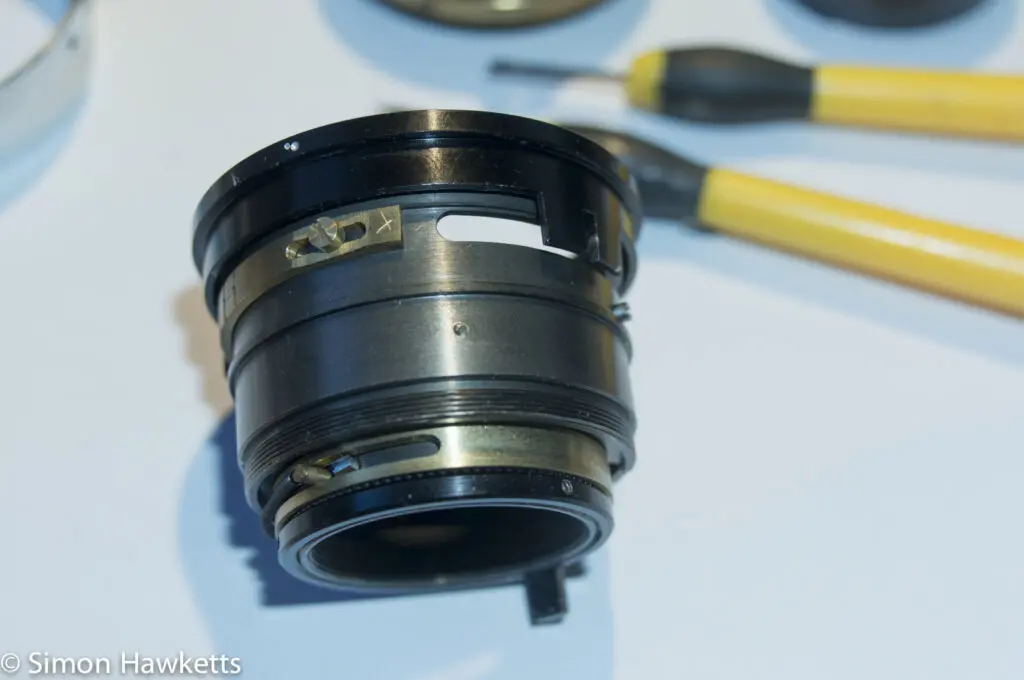
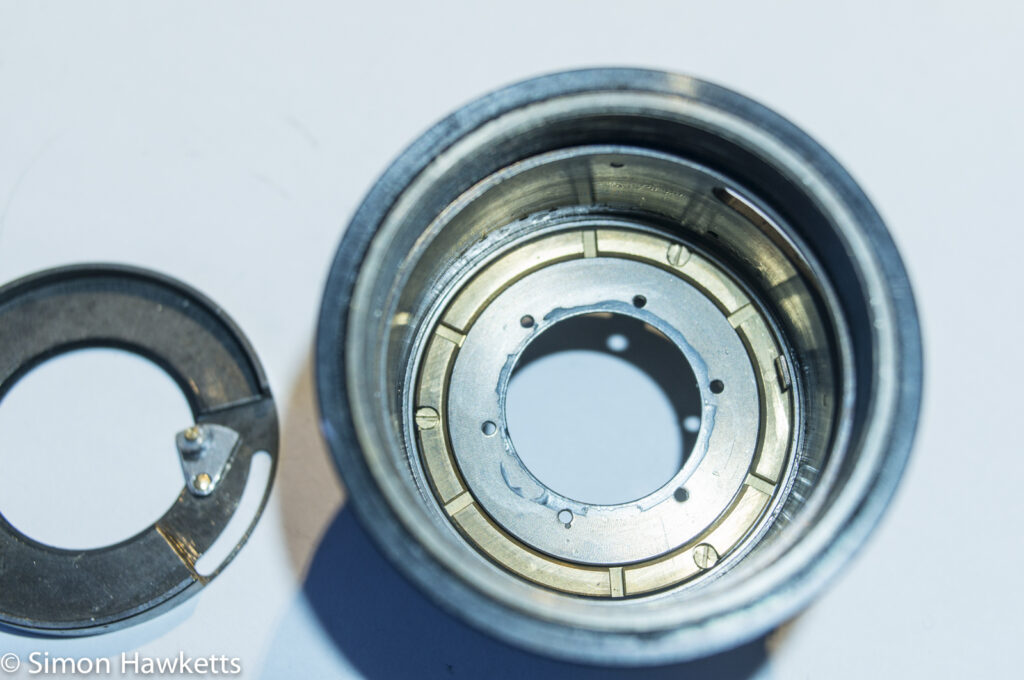
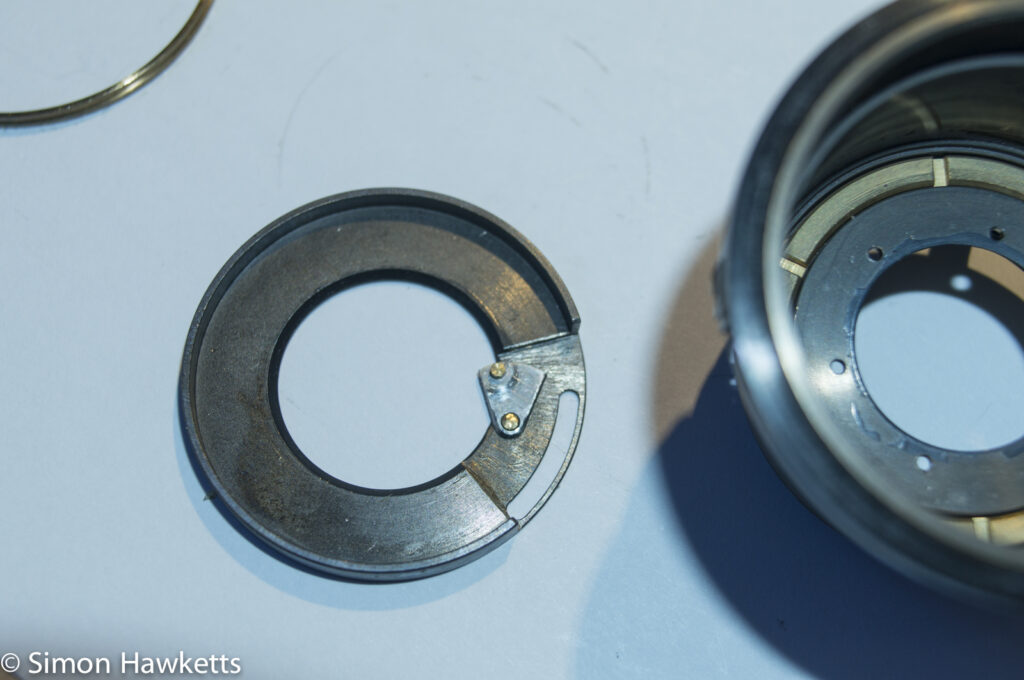
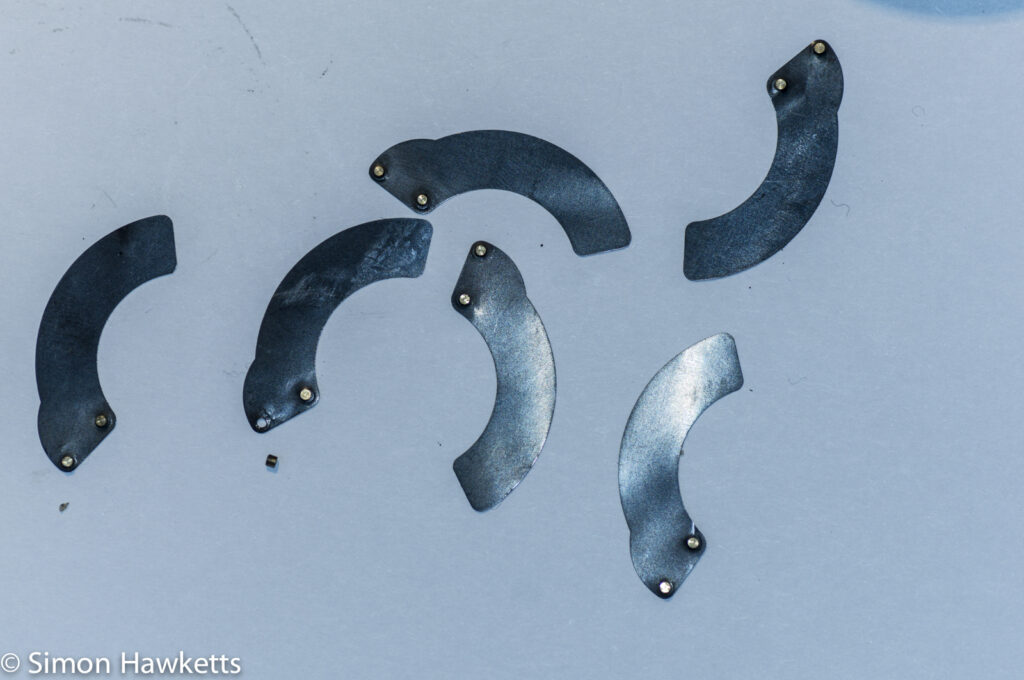
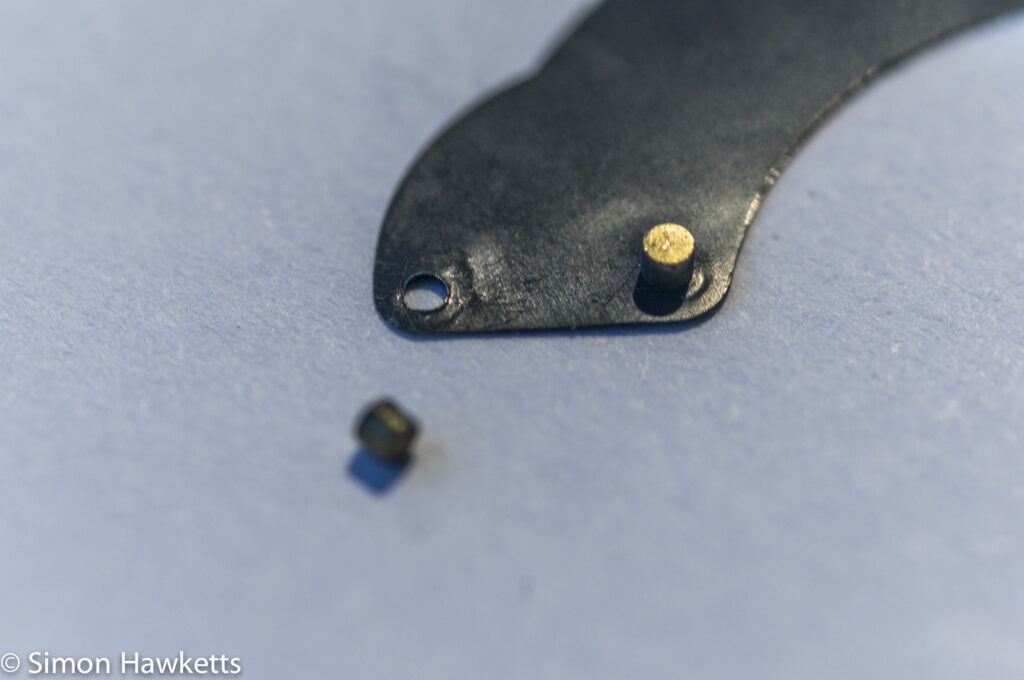
I’ve done this operation on a newer design Miranda lens, but the Miranda 50mm PAD lens was different from that and more difficult to get to the aperture on.
I started by removing the front of the lens by unscrewing it. This was actually quite difficult to do because there isn’t much of the lens front to grip on to above the aperture ring, and it was pretty tight, but eventually I managed to loosen it and found that the whole of the front lens assembly comes out.
With that assembly out and carefully put out of the way I removed the little locking ring which was now visible and expected the aperture retaining disk to come out, as it does with the later Miranda lens design. On this design however the disk doesn’t just pull out when the ring is removed. Although it was free to move around, and I could raise it about a millimetre with a pair of tweezers, it wouldn’t come out. When I looked closely at it there were the ends of three small screws protruding out of the side near the top, so I assumed I would need to delve further into the lens to get the aperture assembly out.
After a lot of messing around, trying to find how to get into the lens, I wound the focus out to the closest setting to move the front of the lens as far away from the back as possible and removed the three screws holding the focus adjustment ring in place. With these out I found I could lift the focus ring up to reveal three screws which retained the bottom of the lens in place.
With these removed I could take the bottom PAD assembly off the lens and then found another small ring around the bottom of the lens which held the aperture assembly in place. At this point I removed the bottom lens assembly by unscrewing it from the lens and then removed the small ring, so I could take the aperture out in one piece for further dismantling and cleaning.
I noticed at this point that the focus helicoid is oozing lots of old grease which is why the aperture is contaminated, but it seemed to be a separate component which, if I could get it clean, would not need further dismantling which should make re-assembly easier.
So I turned my attention to the aperture again. To get the retaining ring out I had to remove the silvered aperture adjust ring which revealed a stop screw in the side which was holding the aperture container in place. I removed that which allowed me to take that out. I assumed if I took that out I could get to the blades themselves, but no! There was another component in place over the top of the aperture and that was held in place by three microscopic screws in the side of the aperture compartment. With those loosened, I could finally get to the aperture and also finally see why it was opening in an uneven fashion.
The problem was that one of the aperture blades had lost a retaining pin which holds it in the ring. The pin was floating around in the compartment and the blade was not moving properly. At this point I couldn’t see what I could do to repair the lens, unless I can either repair the blade which is extremely unlikely, or find another lens with a good aperture. I looked at the shape of the blades in relation to the other Miranda lens I’ve taken apart, but unfortunately (because I have another Miranda lens with a messed up focus helicoid) they are completely different.
So it looks like my lens is a right off – but this post may still be useful to someone who wants to clean up their aperture blades – follow this procedure to get to the blades and then follow my other post to see how to clean the blades.
Note: The eagle-eyed may notice that the aperture blades were not fitted in this series of pictures – that is because I found the problem and then reassembled the lens to take the series of pictures.
Discover more from Everything Vintage
Subscribe to get the latest posts sent to your email.

